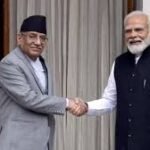India is known for its diverse demographic patterns, with population distribution varying across states. One of the most concerning aspects of this demographic variation is the gender ratio. According to recent reports, Haryana has the lowest female population ratio in India, a statistic that raises serious concerns about gender equality and social progress in the region.
Haryana: The State with the Lowest Female Population
Haryana has consistently recorded a low female-to-male ratio over the years. The state’s sex ratio stands at approximately 926 females per 1,000 males, as per the latest census data. This number highlights the deep-rooted socio-cultural preferences for male children, which have historically led to practices like female foeticide and neglect of girl children.
Factors Contributing to the Low Female Population
Several factors contribute to Haryana’s low female population ratio, including:
- Gender Bias and Societal Norms: A strong preference for male children has resulted in gender-based discrimination, leading to lower survival rates for female infants.
- Female Foeticide and Infanticide: Despite strict laws like the Pre-Conception and Pre-Natal Diagnostic Techniques (PCPNDT) Act, illegal sex-selective abortions still persist in certain regions.
- Lower Education and Employment Opportunities: Girls often receive fewer educational opportunities compared to boys, limiting their economic and social empowerment.
- High Maternal Mortality Rate: Inadequate healthcare facilities and nutrition contribute to high maternal and infant mortality rates, further affecting the female population.
Government Initiatives to Improve Gender Ratio
The Indian government has introduced various policies and schemes to address the gender imbalance in states like Haryana. Some key initiatives include:
- Beti Bachao Beti Padhao (BBBP): Launched in 2015, this campaign aims to raise awareness about the importance of the girl child and improve their welfare through education.
- Sukanya Samriddhi Yojana: A savings scheme for girl children to promote financial security and higher education.
- Free Education for Girls: Several state and central government initiatives provide scholarships and incentives for girls’ education.

Why This News is Important?
Implications on Gender Equality
The low female population in Haryana and other states with poor sex ratios reflects deep-seated gender inequality, which affects various aspects of social and economic development.
Impact on Economic Growth
A declining female population can negatively impact labor force participation, leading to economic inefficiencies and hindering overall development.
Health and Social Reforms
Understanding these demographic trends is crucial for implementing effective health and social welfare policies to promote gender balance.
Historical Context
Haryana has historically faced gender imbalance issues. Over the decades, government policies and social reform movements have attempted to address this challenge. However, despite significant progress, the state still struggles with a skewed sex ratio. The problem can be traced back to deeply ingrained patriarchal traditions and economic structures that favor male inheritance and social status.
Key Takeaways from “Which Indian State Has the Lowest Female Population?”
| S.No | Key Takeaway |
|---|---|
| 1 | Haryana has the lowest female population ratio in India, with around 926 females per 1,000 males. |
| 2 | Gender bias and cultural preferences for male children contribute to the low female population. |
| 3 | Government initiatives like Beti Bachao Beti Padhao aim to address the gender imbalance. |
| 4 | Low female population affects economic growth, labor force participation, and social progress. |
| 5 | Historical gender discrimination and lack of access to healthcare and education continue to challenge gender equality in the state. |
FAQs: Frequently Asked Questions
- Which Indian state has the lowest female population?
- Sikkim has the lowest female population in India.
- What is the female population ratio in Sikkim?
- As per the latest census, Sikkim has one of the lowest female-to-male ratios in India.
- Why does Sikkim have a lower female population?
- Factors such as migration, fertility rates, and economic activities contribute to this demographic trend.
- Which Indian states have a low female-to-male ratio?
- Haryana, Punjab, and Sikkim have a lower female-to-male ratio compared to other states.
- What is the significance of the sex ratio in demographic studies?
- The sex ratio is an important indicator of gender equality, social structures, and population trends.
Some Important Current Affairs Links


















 Exciting News!
Exciting News!  Join Our Telegram Channel Now!
Join Our Telegram Channel Now!
 Join our Telegram channel for a thrilling adventure into the world of daily current affairs.
Join our Telegram channel for a thrilling adventure into the world of daily current affairs. 
 Don’t miss out on the latest updates and insights! Click to join now and be part of the knowledge revolution!
Don’t miss out on the latest updates and insights! Click to join now and be part of the knowledge revolution! 
